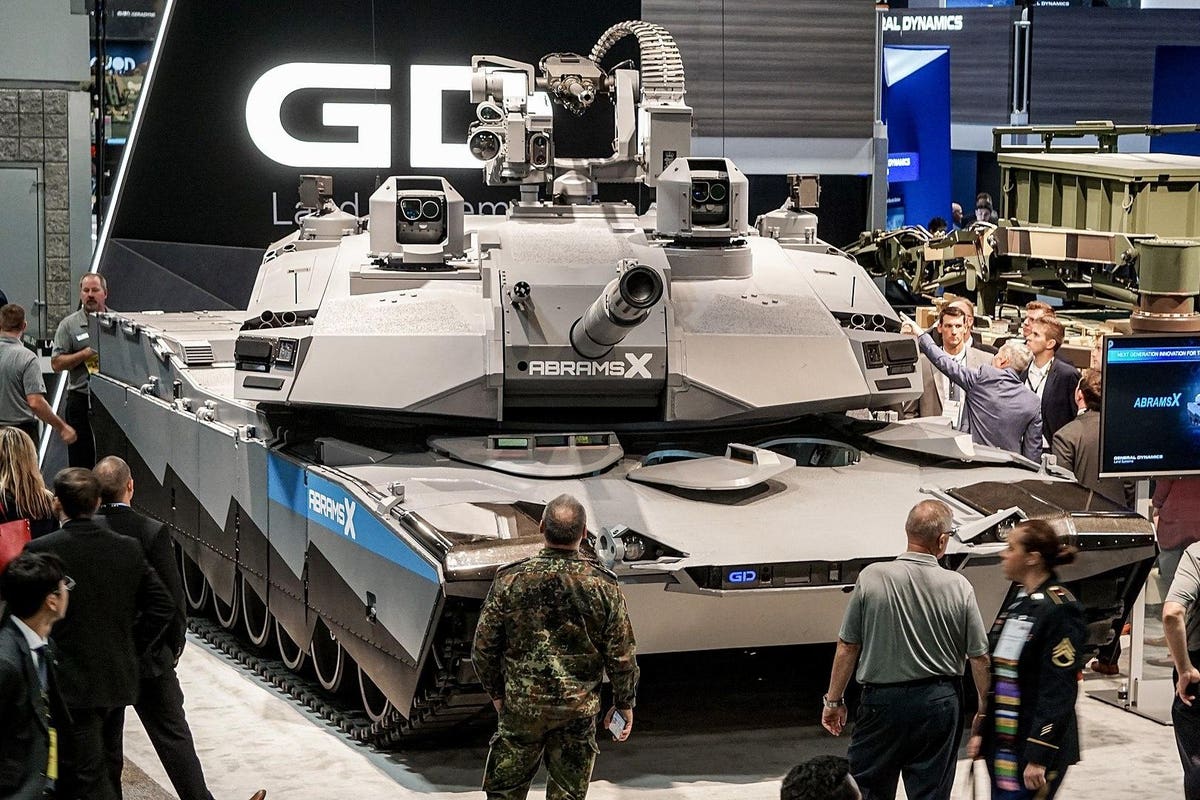The U.S. Army disclosed on September 6 that it will launch an aggressive upgrade of the service’s Abrams tank, greatly accelerating the pace of planned engineering changes in response to lessons learned from the war in Ukraine.
The new plan for what eventually will be designated the M1A3 Abrams isn’t a clean-sheet design, but it introduces so many refinements into the Army’s signature armored vehicle that it will be a very different fighting system—more mobile, more lethal, more survivable, and more sustainable in hostile environments.
The Army has been thinking about how to adapt its heavy armored brigades to emerging combat conditions for some time, but unlike in the case of other warfighting systems, it hasn’t seriously considered replacing the Abrams.
That would take too long, and eventually bring it back to a vehicle similar to what it already has. The laws of physics as applied to land warfare largely dictate the configuration of main battle tanks.
However, a host of new technologies have become available since the current M1A2 debuted in the 1990s, and the pattern of fighting in Ukraine has convinced Army leaders that continuing the recent series of incremental upgrades to the tank’s design isn’t sufficient to stay ahead of potential adversaries.
So, the service is canceling the next round of planned upgrades and preparing to leap ahead to a dramatically transformed Abrams design that can begin fielding in 2030. As Jason Sherman of Inside Defense put it in his own account of the changes last week, “with this decision, the Army will conclude its program of incrementally upgrading the M1A2 variant of the tank.”
What comes next isn’t fully described in the decision memorandum directing the shift that was signed by Army acquisition chief Douglas Bush on July 28, but there is already an emerging consensus in the maneuver-warfare community about what kinds of upgrades would be most useful:
- The survivability of the tank on the modern battlefield would be improved by integrating an active protection system into the design and introducing defenses against top attack by unmanned aircraft. Active protection systems use kinetic and non-kinetic means to defeat incoming munitions.
- The weight of the tank, which at 76 tons limits its operational flexibility, would be reduced by using an autoloader for the main gun and thereby eliminating the need for one of four crew members in the turret. That potentially could lower the tank’s profile on the battlefield while allowing the removal of tons of heavy armor.
- The mobility of the tank would be enhanced by shifting to a hybrid propulsion system that uses conventional fuel or electric drive as circumstances dictate. The electric drive would be recharged when the engine is running on fossil fuel while lowering overall fuel consumption and minimizing the noise generated by the engine.
- The lethality of the tank would be bolstered by the introduction of advanced electronics and use of autonomous or loitering munitions. Abrams has recently switched from use of diverse rounds in its main gun to an all-purpose round, and its targeting computer already enables a 95% probability of a hit on the first shot.
These and other modifications would significantly diminish the logistical burden of sustaining the M1A3 on future battlefields. A vehicle that consumes less fuel, utilizes more lethal munitions, has fewer crew members and is less likely to be disabled by enemy fire is intrinsically easier to support. Just being able to use more local infrastructure such as bridges due to reduced weight is a potential plus in terms of logistics.
It is too soon to say precisely how much weight might be taken out of the vehicle, but Army leaders notionally think that a 10- to 15-ton reduction might be feasible. This would have logistical benefits far from the battlefield, in terms of the reduced burden imposed on airlift and sealift.
One thing about Abrams that will not change: it will continue to be assembled by General Dynamics
GD
Starting over with a full-up competition would take many more years as the program went through the various stages of issuing requests for proposals, selecting a source, reviewing the design, testing prototypes and so on. It also would cost hundreds of millions of dollars more than delivering upgrades through ECPs, as they are called.
General Dynamics, the nation’s sole producer of main battle tanks for the last 40 years, contributes to my think tank.
The Army will presumably keep producing the most recent variant of Abrams until the next generation is available, partly to assure readiness and partly to preserve a highly skilled workforce. But it appears Abrams is now on a different vector, and will remain an integral part of the nation’s arsenal until well beyond mid-century.
Read the full article here





